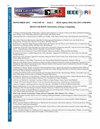Real-time Object Detection Performance Analysis Using YOLOv7 on Edge Devices
IF 1.3
4区 工程技术
Q3 COMPUTER SCIENCE, INFORMATION SYSTEMS
引用次数: 0
Abstract
Real-time object detection in images is one of the most important areas in computer vision and finds applications in several fields, such as security systems, protection, independent vehicles, and robotics. Many of these applications need to use edge hardware platforms, and it is vital to know the performance of the object detector on these hardware platforms before developing the system. Therefore, in this work, we executed performance benchmark tests of the YOLOv7-tiny model for real-time object detection using a camera and three embedded hardware platforms: Raspberry Pi 4B, Jetson Nano, and Jetson Xavier NX. We tested and analyzed the NVIDIA platforms and their different power modes. The Raspberry Pi 4B achieved an average of 0.9 FPS. The Jetson Xavier NX achieved 30 FPS, the maximum possible FPS rate, in three power modes. In the tests, it was possible to notice that the maximum CPU clock of the Jetson Xavier NX impacts the FPS rate more than the GPU clock itself. The Jetson Nano achieved 7.4 and 5.2 FPS in its two power consumption modes.在边缘设备上使用 YOLOv7 进行实时物体检测性能分析
图像中的实时物体检测是计算机视觉中最重要的领域之一,在安全系统、防护、独立车辆和机器人等多个领域都有应用。其中许多应用需要使用边缘硬件平台,因此在开发系统之前,了解物体检测器在这些硬件平台上的性能至关重要。因此,在这项工作中,我们使用摄像头和三种嵌入式硬件平台对 YOLOv7-tiny 模型进行了性能基准测试,以实现实时物体检测:树莓派 4B、Jetson Nano 和 Jetson Xavier NX。我们测试并分析了英伟达平台及其不同的电源模式。Raspberry Pi 4B 的平均帧速率为 0.9FPS。Jetson Xavier NX 在三种电源模式下均达到了 30 FPS(最大可能的 FPS 速率)。在测试中可以发现,Jetson Xavier NX 的最大 CPU 时钟比 GPU 时钟本身对 FPS 速率的影响更大。Jetson Nano 在两种功耗模式下分别达到了 7.4 和 5.2 FPS。
本文章由计算机程序翻译,如有差异,请以英文原文为准。
求助全文
约1分钟内获得全文
求助全文
来源期刊

IEEE Latin America Transactions
COMPUTER SCIENCE, INFORMATION SYSTEMS-ENGINEERING, ELECTRICAL & ELECTRONIC
CiteScore
3.50
自引率
7.70%
发文量
192
审稿时长
3-8 weeks
期刊介绍:
IEEE Latin America Transactions (IEEE LATAM) is an interdisciplinary journal focused on the dissemination of original and quality research papers / review articles in Spanish and Portuguese of emerging topics in three main areas: Computing, Electric Energy and Electronics. Some of the sub-areas of the journal are, but not limited to: Automatic control, communications, instrumentation, artificial intelligence, power and industrial electronics, fault diagnosis and detection, transportation electrification, internet of things, electrical machines, circuits and systems, biomedicine and biomedical / haptic applications, secure communications, robotics, sensors and actuators, computer networks, smart grids, among others.
 求助内容:
求助内容: 应助结果提醒方式:
应助结果提醒方式:


